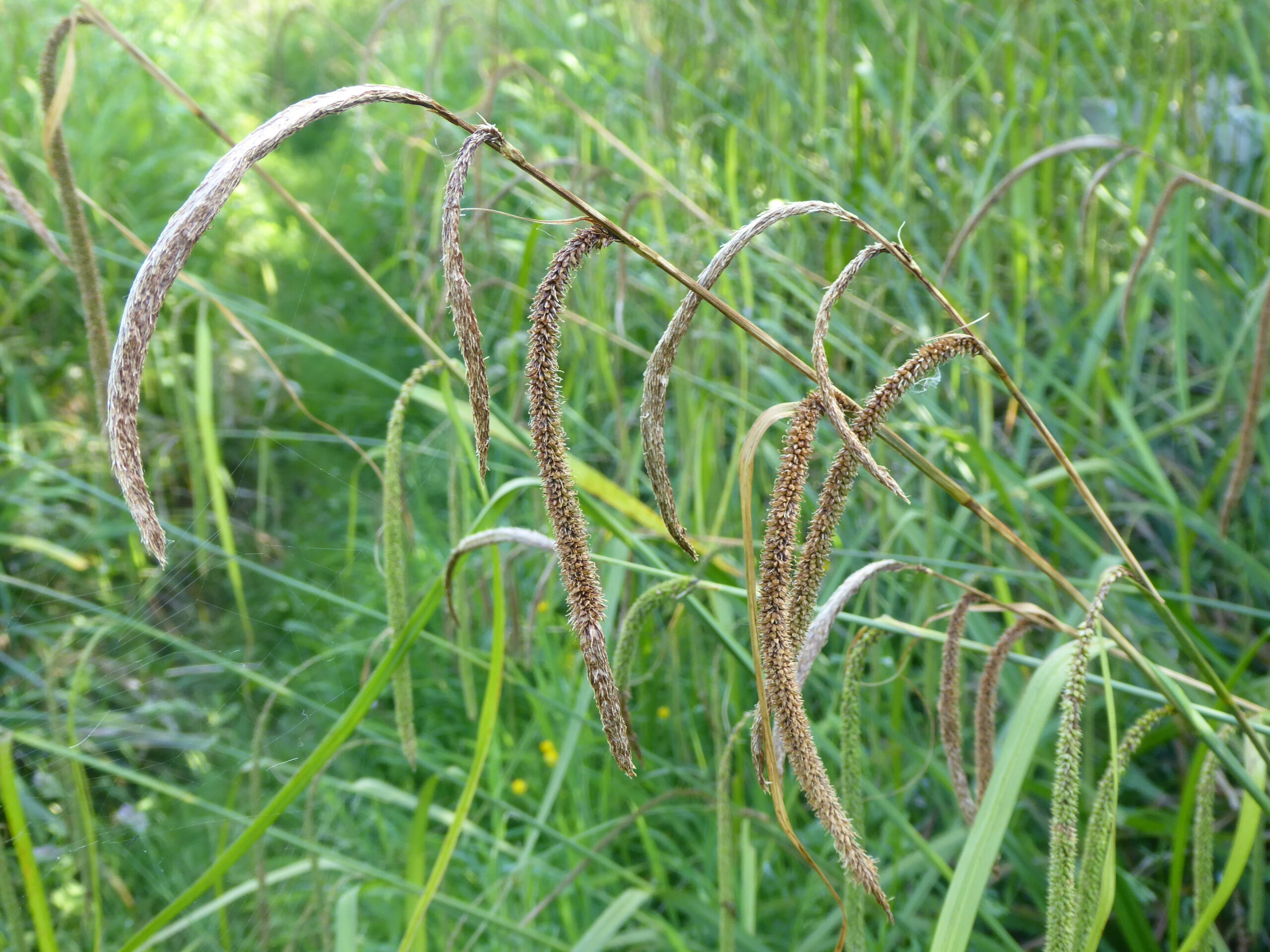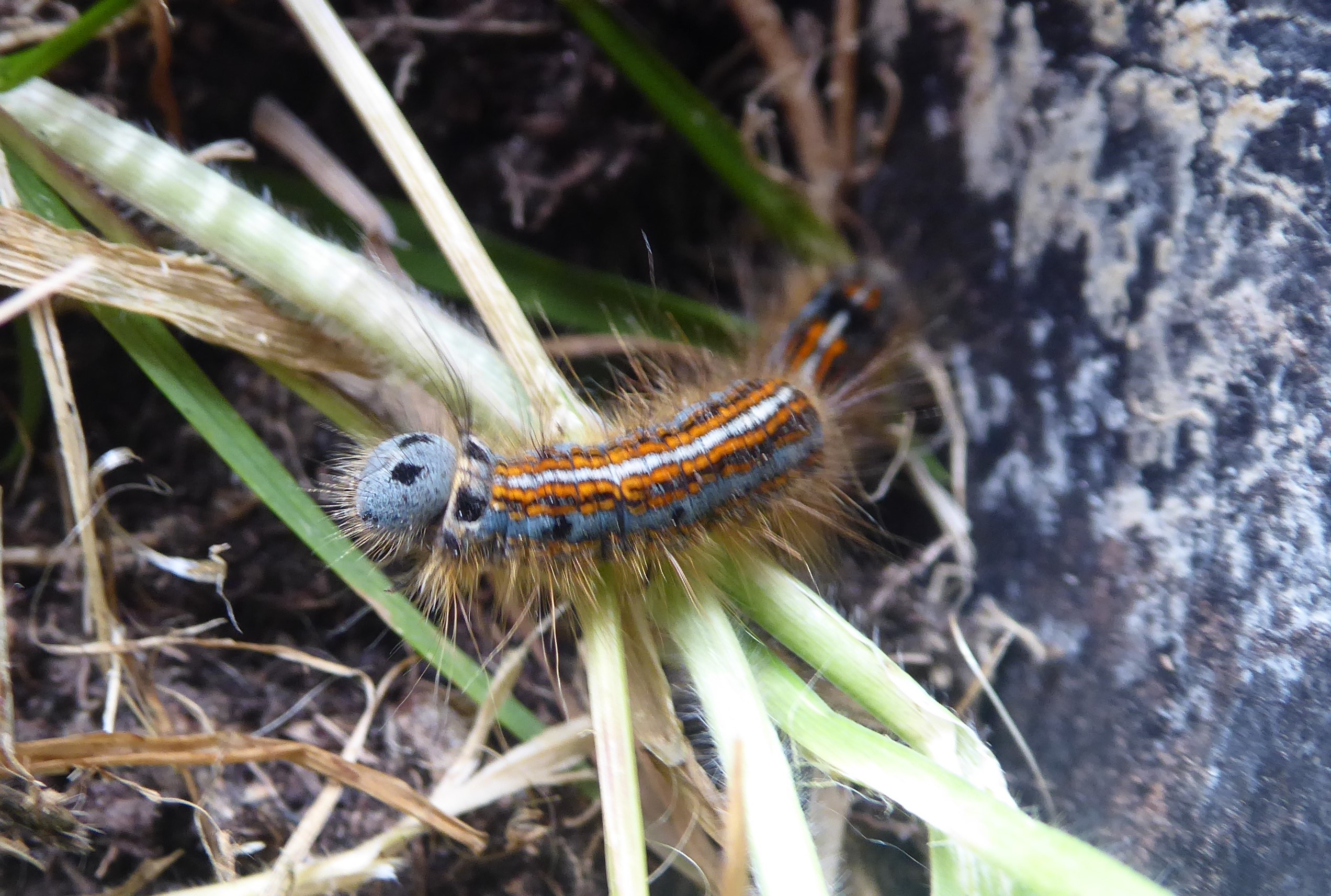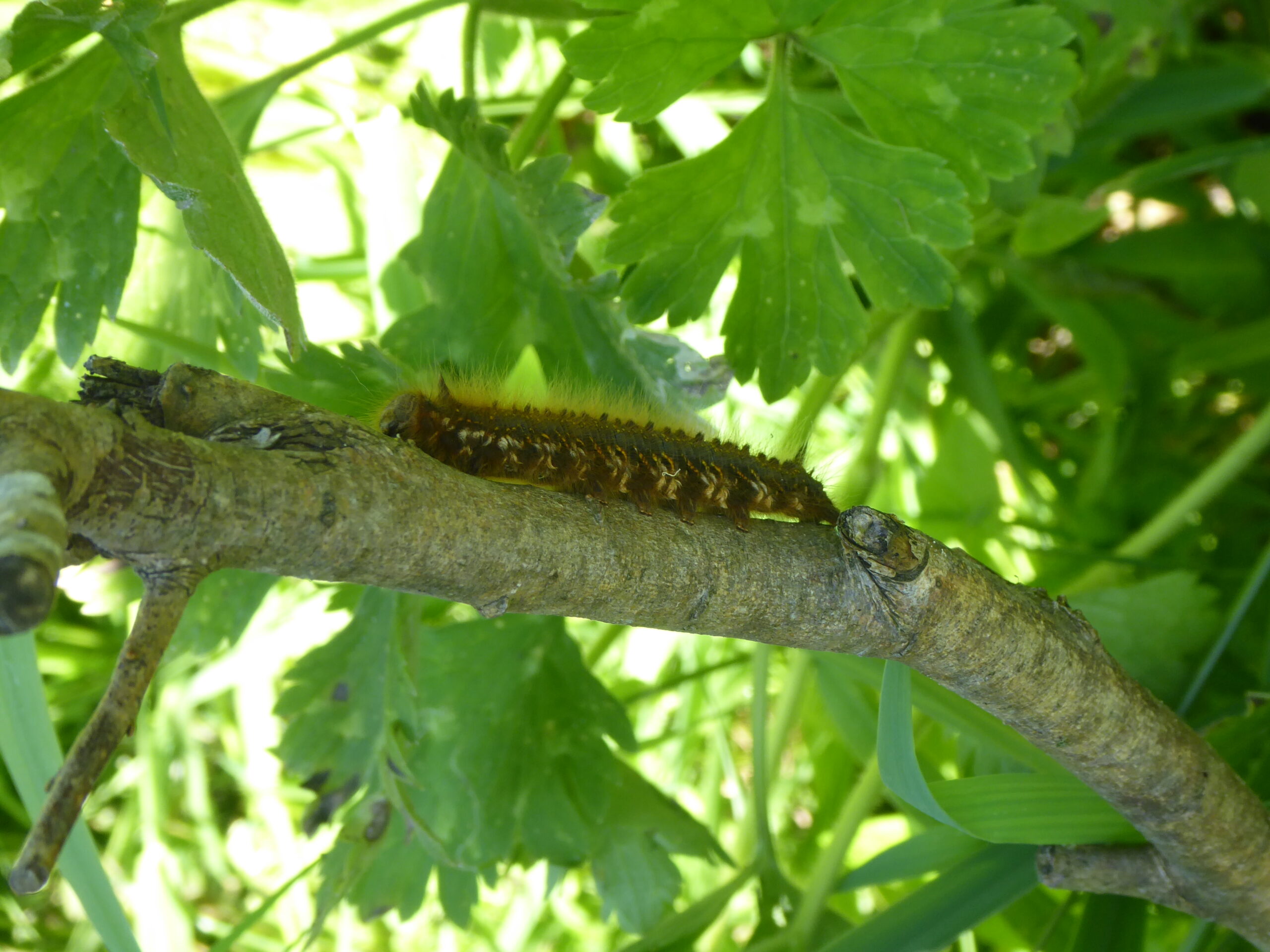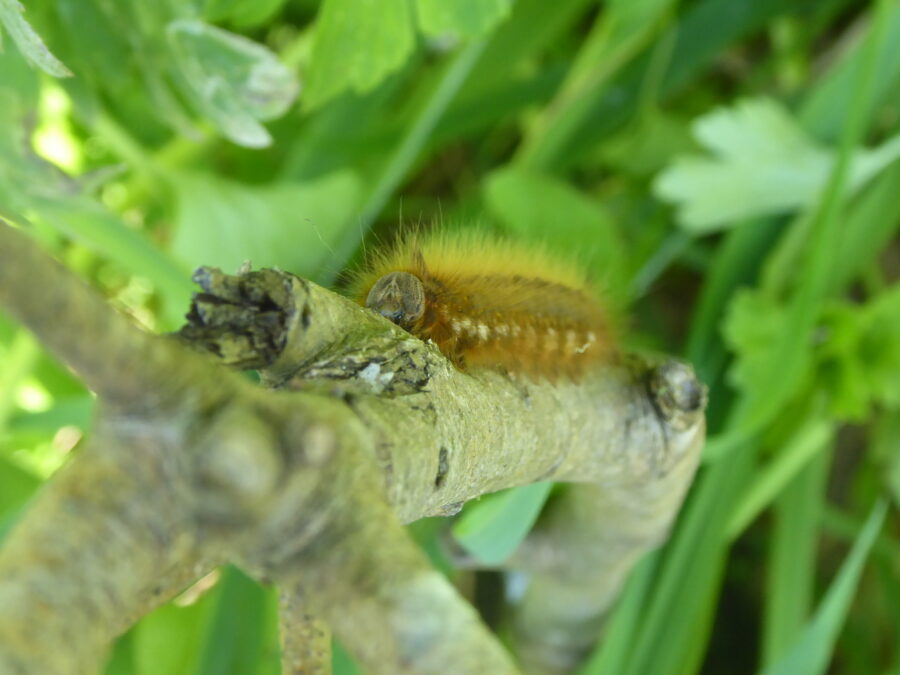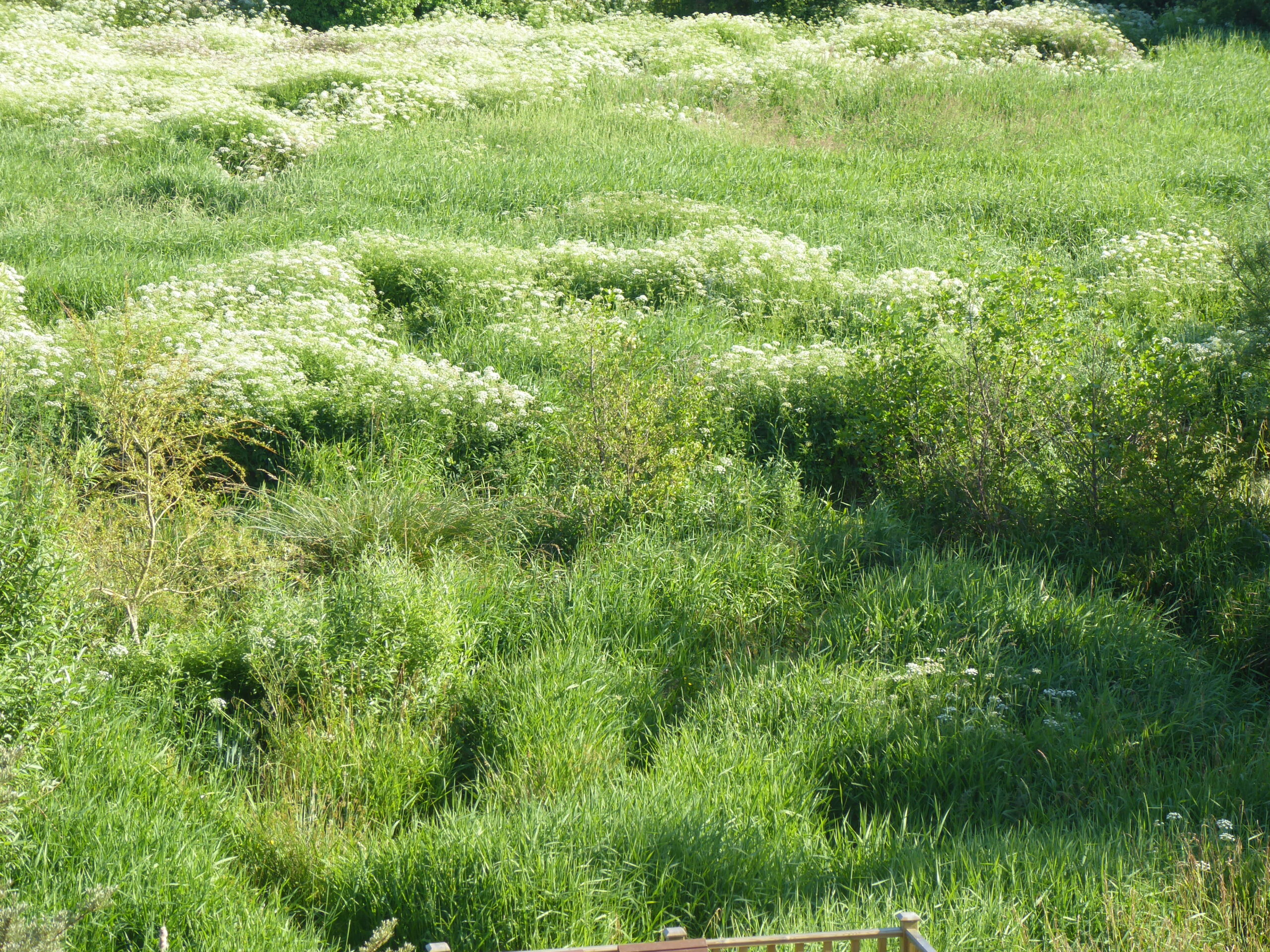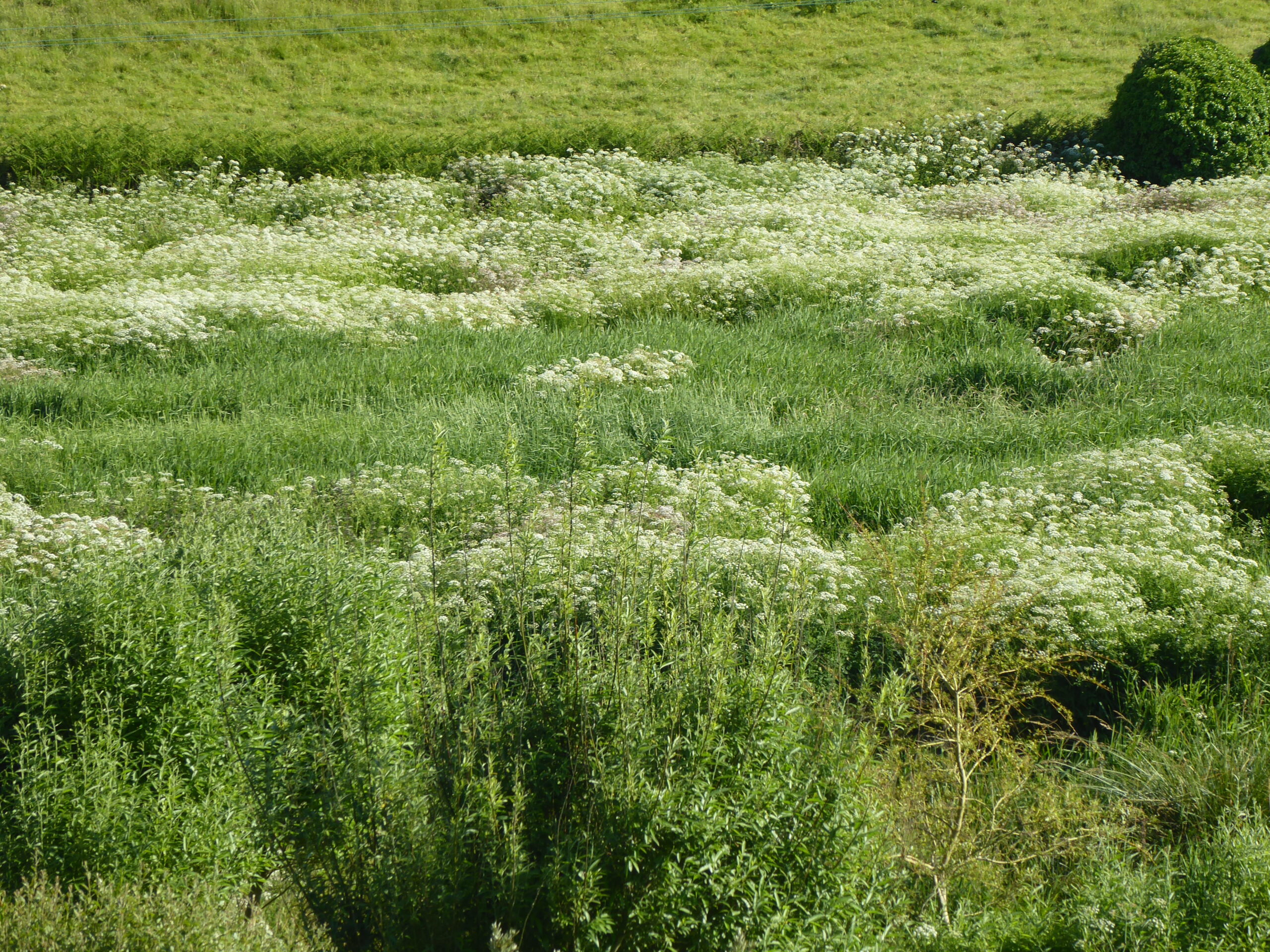“Sedges have edges, rushes are round, grasses are hollow, so what have you found?” – Woodland Trust website.
I can see this is going to be a very useful little rhyme – and I like it a lot! This is clearly a sedge, as it has edges to its stem. We have a large patch of Pendulous Sedge in our watermeadow, which we call the Drunken Forest on account of its lolloping appearance when it gets top-heavy or ravaged by the wind. Nearly a metre tall at this time of year, it’s a very untidy plant, but where does curating stop and gardening begin? It seems we must put up with some untidiness. The RHS says it can become a “troublesome weed in damp gardens”. It’s true that it is one of the plants that has moved into the once-bare patches left by the removal of the HWD. One of the things I find interesting about watching our watermeadow is how the dynamics change each year. Different plants seek dominance in different areas – grasses, sedges, nettles. This year the HWD is trying to make a comeback, and the Pendulous Sedge is also gaining ground with tussocks popping up down each side of the watermeadow.
